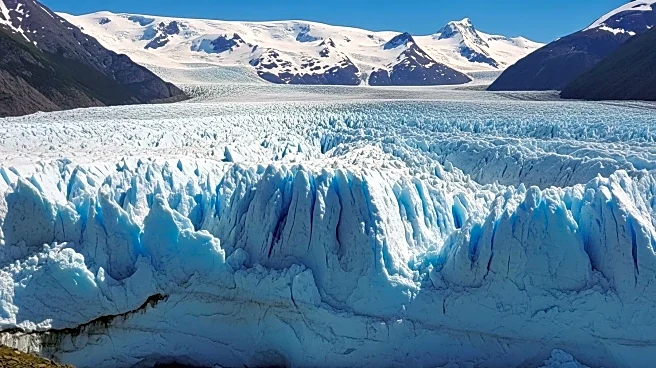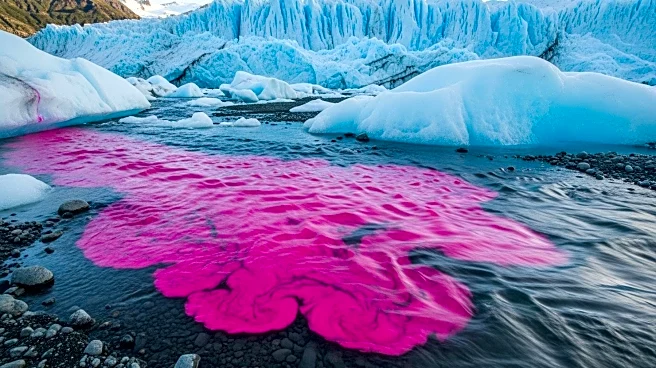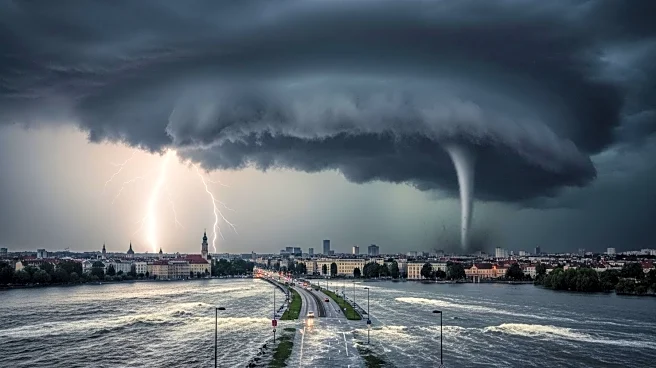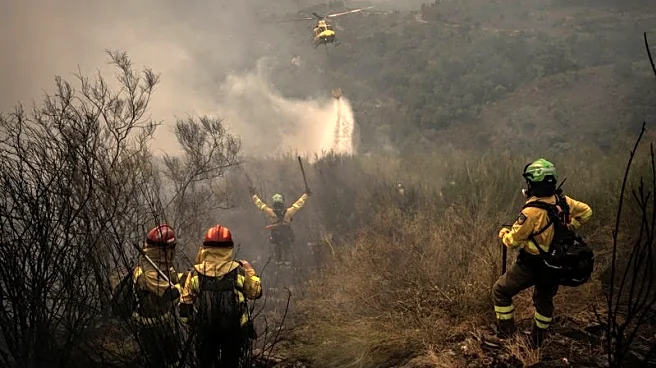What's Happening?
A new study led by the Pellicciotti group at the Institute of Science and Technology Austria (ISTA) reveals that the last stable glaciers in Central Asia, located in the northwestern Pamir Mountains of Tajikistan, have started to collapse. The research, published in Communications Earth & Environment, utilized a monitoring network established on a benchmark glacier to model the catchment's behavior from 1999 to 2023. The findings indicate that the glacier likely reached a tipping point in 2018 due to insufficient snowfall, marking a significant shift in its stability.
Why It's Important?
The collapse of these glaciers is a critical indicator of the broader impacts of climate change on global water resources. The Pamir Mountains, often referred to as the 'Third Pole' due to their vast meltwater reserves, are crucial for the water supply in Central Asia. The decline in glacier health could have severe implications for water availability, agriculture, and ecosystems in the region. This study highlights the urgent need for comprehensive climate monitoring and adaptation strategies to mitigate the effects of glacier melt and ensure sustainable water management.
Beyond the Headlines
The study underscores the importance of international collaboration in climate research, as it involved scientists from Austria, Switzerland, France, and Tajikistan. The research also emphasizes the role of local communities in maintaining monitoring networks and adapting to environmental changes. The findings contribute to the understanding of the Pamir-Karakoram Anomaly, where some glaciers have remained stable or grown despite global warming, and call for further investigation into the factors driving this anomaly.












